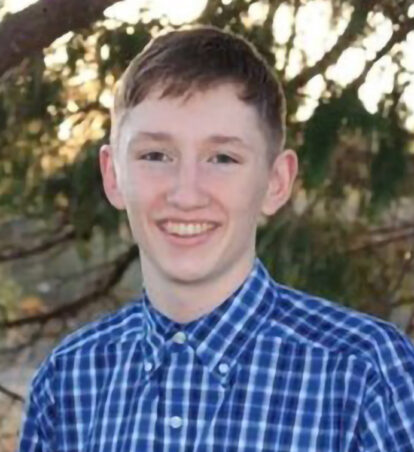Interview with Chris Smith, Speedgolf World-Record-Holder

(photo courtesy of Wood Sabold)
Ahead of the Speedgolf World Championship on October 26-27 at Bandon Dunes, BandonDunesGolf.com caught up with Chris Smith, Portland, Ore., who not only is in the field, but holds the single-round Speedgolf world record of 109.06 (65 in 44:06 at the 2005 Chicago Speedgolf Classic).
Smith, 50, is a golf teaching professional. We asked him about his world-record round, training, how Speedgolf affects traditional golf, and more.
What makes up the ideal Speedgolf course?
A perfect Speedgolf course in terms of what would make it fast would be to have the greens very close to the next tee box, which is often the case at Old Mac. Flatter the better because that saves energy.
Do you lose many golf balls or have any particular strategy to avoid losing your ball?
I don’t hit it far enough to lose many golf balls in general in golf. If you don’t hit it long you better hit it straight! (laughs) I would fit into that category. I hit it long enough to play a Speedgolf course. And, I think most speed golfers figure out pretty quick they’re better off hitting it not quite as far, because running sideways, zig-zagging, looking for golf balls is not good, so I think a general strategy or philosophy for Speedgolf would be to try to hit it short and straight, all things considered.
How has holding the Speedgolf world record affected your professional career?
I don’t know if it’s changed me professionally. Professionally, primarily I coach, teach and then consult on the side with Nike Golf and some other entities. Keep in mind, I meet people everyday (laughs) who don’t even know what Speedgolf is, let alone that I’m the world-record-holder. It certainly hasn’t hurt me professionally and really what it’s allowed me to do is use a lot of what I’ve learned, playing Speedgolf at a high level, and translate that into my teaching and coaching. For example, playing less deliberately, less cautiously.
I do talks and presentations on how to optimize performance and I use my Speedgolf accomplishments as examples of how that kind of training and that kind of approach can help people in different realms, not necessarily Speedgolf, not necessarily golf, but in a lot of different things, so, yeah it’s certainly helped. I wrote a book in 2007, which was based on an article I did for Golf Digest in 2006. Christopher Smith’s book, “I’ve Got 99 Swing Thoughts But, Hit the Ball Ain’t One” and accompanying audiobook, “Better Golf: Whole Brain Learning” are available on his website: christophersmithgolf.com.
Do you spend more time on the range or at the track?
Depends what’s broken. I actually just got back from a track workout. I have to be very careful what I do from a running standpoint now because I’ve got a few miles on my odometer. I have very little cartilage left in either of my hips, basically arthritic. So, I’m a big believer in whatever you’re trying to get better at, the best way to get better at “that”, is to do “that” so I take any opportunity I can get to actually play Speedgolf – which is the ultimate training because it combines the running with the golf. If that’s not available, then I will replicate in my run what would happen in a round of Speedgolf, so a lot of stopping and starting and when I practice on the range I will practice with a club and the shot that I would probably be hitting. All my training for the World Championship will be geared toward what I think specifically will happen those two days at Old Mac and at Bandon Dunes.
Do you actively monitor your heart rate as you play Speedgolf?
I don’t, but I probably should. (laughs) I know a lot of people do. You’re trying to go as hard as you can and then when you get to your next shot, not take too long to recover, and then, very critical, hit a good shot. It’s not just people sprinting, slapping shots around, because otherwise people would shoot 120, which really isn’t very interesting. The fitter you can get, the faster you can run and more importantly, the faster you recover when you get to your next shot, so you take less time to recover and still get in a good golf shot.
From tee to green, does how you play the hole evolve in your mind like it does for a regular round, just at a faster pace?
Well, you’re thinking about your next shot more than in traditional golf, because your next shot is literally only seconds away. Let’s say you’re playing the first hole at Old Mac (par-4, 304 yards). You hit your drive. You grab your bag and you’re running 200 to 300 yards toward your drive and you have to start to calculate feet and visualize about how far you’re going to hit your next shot depending on distance, pin placement, conditions, uphill/downhill.
The greatest thing about Speedgolf is, let me put it this way… All these supposedly fabulous laser GPS devises, uh, there’s one that we all have that works way better and way faster and it’s called your mind body system. It’s amazing what you can do with less than precise yardages, less than a full set of clubs just relying on your system.
In normal golf you hit a shot and it could be five to ten minutes before you hit your next shot and you have a laser or a GPS and it does all the work for you, and you’ve got all your clubs. Speedgolf is a phenomenal way to train for regular golf, because it’s the perfect example of making your training more difficult than the actual game.
Can you describe your World Record round?
2005 in Chicago. We had an event for several years at Jackson Park Golf Course, which is a public course that’s existed for quite some time. It actually had some USGA events back in the day. Very flat. Very short. I’d say close to 6,000 yards, no more. We’d always have fast times there, with some good scores.
I was in a particularly good frame of mind. Was I fit? Yeah. Did I hit some good shots? Yeah. I was very patient with myself. I was very tolerant of bad shots. It was a very enjoyable round. I think we all tend to beat ourselves up, especially if we’re good players and we need to have more empathy toward ourselves and I did that day.
It was a funny round. I made a lot of birdies and a lot of bogies. I tend to plod around making pars, a birdie here a bogey there. That day was good.
It’s a par 70 golf course. I shot 5-under-par in 44 minutes and six seconds. I had six clubs.
Actually, I have a couple pretty cool mental images. The last hole at Jackson Park is a short par-4. It’s less than 300 yards, I don’t know, it might be 275-280. You’ve got out-of-bounds to the right and trees down the left side. I hit my tee shot to one foot there. I almost made it. I tapped in for eagle, 65. It was a cool way to finish.
So, yeah, I can say I was in a state of mind that was very conducive to playing good golf: patient with myself, tolerant, empathetic. No expectations, you know, which is easy to say, but I just allowed things to happen. I made a double that day and I made some bogies. It was a good round. I’ve had a lot of good rounds like that, but not in competition. That happened to be one in a top position with scorekeepers and whatnot, so yeah, it was cool. I’m proud of it.
I think someday, someone’s going to take that down, but it’s going to have to be the right golf course. It’s not going to happen at Bandon Dunes, I don’t think. I think Bandon’s too hard. It’s too challenging, especially here for people who don’t know how to play links courses. Nonetheless, records are meant to be broken, so, someday soon.
Did you know at any time during the round that you were playing for a world record?
I was just playing one shot at a time and not looking ahead, not looking behind. Another great thing about Speedgolf is what every sport psychologist is always trying to help people with: Stay in the present. Well, when you are playing Speedgolf you are in the present, because if you hit a bad shot, rather than having time to think about it or worry about it, your next shot is literally seconds away, so you are in the present. Everyone from the Buddha to Dr. Bob Rotella is trying to get people to stay in the present and enjoy it.
That certainly helped, so, no. I wasn’t thinking about the score until the end. I knew I was playing pretty good. Every once in a while I’d look at my watch, just to see what kind of pace I’m going at, but there wasn’t a target up there.
Do you find yourself comparing rounds you play now to that one?
No, not really. Accepting change and accepting time, accepting aging… It’s something we all have to deal with. I look at Arnold Palmer playing golf now, in 2013. Does he compare that to how he played in the 60s? He can’t. He’s got to find different reasons to play, different reasons for enjoyment.
I don’t know if my golf game’s any better or worse than it was back then. I’m definitely slowing down. I think I can get fitter between injuries and illness, but it’s been a pretty tough year-and-a-half or so, but I also know my body is asking me to do different things.
It’s all a part of growing, evolving. I’m just going to do my best. As long as I have given my best, then that’s all I can ask. Things are constantly changing and I think we begin to suffer (laughs) when we fail to see the impermanence of everything. Easier said than done, but that’s the direction I’m trying to move in.
BONUS AUDIO: More Q&A with Chris Smith. Click play on our Soundcloud player below.















